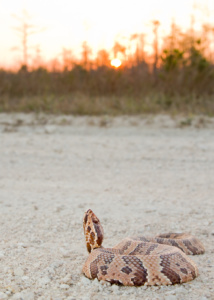Snakes And Their Control
Article courtesy of Texas A&M AgriLife Extension Service
https://agrilifetoday.tamu.edu/
There are many different kinds of snakes in Texas, but only rattlesnakes (Crotalus spp.), copperheads (Agkistrodon contortrix), cottonmouths (Agkistrodon piscivorus) and coral snakes (Micrurus spp.) are poisonous and should be avoided. Snakes are very specialized animals and have an important role in our environment. Most snakes are non-poisonous and help control rodent and insect populations. Like other reptiles, snakes are cold-blooded animals; their body temperature is regulated by climatic conditions. Snakes cannot tolerate extreme cold and will normally hibernate during the winter months, usually emerging from their dens in late February or early March. Snakes are most active at night and during early morning and late evening hours.
Damage
Most non-poisonous snakes cause little damage other than to frighten people. Occasionally, large snakes may feed on chicks, small ducks or eggs. In some cases, water snakes may damage fish farms by feeding on fish.
The greatest danger to people is the possibility of being bitten by a poisonous snake. The best way to prevent snake bites is to learn how to recognize the poisonous ones, and keep away from rocky or brushy areas where they are likely to be.
Control Methods
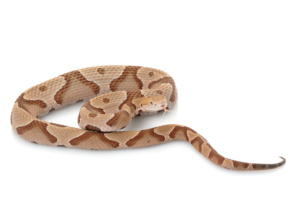
Cultural Control
If the presence of snakes is undesirable, removing their shelter is one of the most effective ways of discouraging them. Eliminating rock piles, brush piles, tall grass, etc., will cause snakes to seek a more suitable habitat. Lumber, wood piles and other debris around the home should be stored at least 18 inches off the ground. Controlling insect and rodent populations in the area also will help to discourage snakes by eliminating their food supply.
Exclusion
Sometimes snakes enter houses, barns and other buildings. They are attracted by the presence of rodents or insects as well as by the cool, damp, dark areas of buildings. To keep snakes out of houses or other buildings, all points of entry must be sealed. Since snakes normally enter a building at or below ground level, all openings around water pipes, electrical outlets, doors and windows should be closed. Holes in masonry foundations around the home should be sealed with mortar. Hardware cloth or sheet metal also can be used to seal holes in wooden buildings or siding.
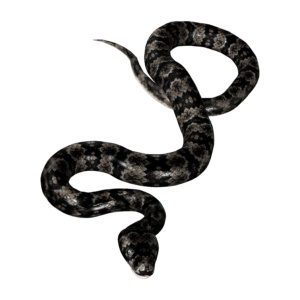
Snake-proof fences may be of some value if the area to be protected is relatively small. The fence should be made with heavy, galvanized screen with ¼-inch wire mesh. The fence should be 36 inches wide, with the lower edge buried at least 6 inches in the ground. Slant the fence outward from the base at a 30-degree angle using supporting stakes inside the fence. Tall vegetation around the fence should be cut to prevent snakes from climbing over the fence. Since the construction of a snake-proof fence may be costly, this method is normally practical only in small areas.
Trapping
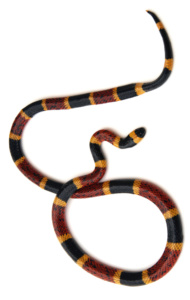
Rodent control glue boards are often effective for catching snakes that have taken up residence inside a building. The glue board is coated with a sticky substance on one side; this causes the snake to become stuck as it attempts to cross the board. Several rodent glue traps can be attached to a plywood board approximately 24 inches by 16 inches. The trap should then be placed near the wall where snakes travel. Captured snakes can be released or destroyed (if legal). Glue boards are available at feed stores, hardware stores and/or grocery stores.
Funnel traps also can be effective in capturing snakes. A funnel trap can be constructed by rolling a 3-foot by 4-foot piece of ¼-inch hardware cloth into a cylinder about 1 foot in diameter and 4 feet long. An entrance funnel is made in a similar way and fitted into one end of the cylinder. The other end of the cylinder is closed with hardware cloth. The trap can then be placed next to a fence or building where snakes are likely to crawl.
Chemical Control
There are currently no toxicants or fumigants registered for the control of snakes. Registered commercial repellents are available for some species of snakes and should be used according to the label.
Shooting
Where legal, snakes can be shot using either a rifle or shotgun. Since most of the snakes found in Texas are non-poisonous and cause little damage, they should not be indiscriminately killed.
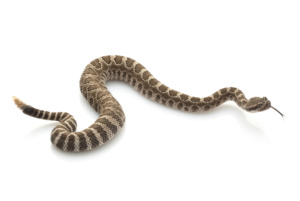
Other Methods
It is sometimes possible to remove snakes from a house or other building by placing piles of damp burlap bags in areas where the snakes have been seen or are likely to be. Snakes are attracted to damp, cool, dark places such as the burlap bags. The bags should be checked every few days for captured snakes.
In rural areas, snake populations can be reduced by means of an organized den hunt. Hunts usually are held in early spring when snakes are about to emerge or have just emerged from their dens. Fall hunting can be conducted when snakes are gathering to hibernate.
Restrictions
Many snakes in Texas are protected by state law, and indiscriminate killing or any other control is illegal. Before using any snake control measures or relocating captured snakes to another area, contact local representatives of the Texas Parks and Wildlife Department. For additional information contact the nearest office of the Texas A&M AgriLife Extension Service–Wildlife Services.
